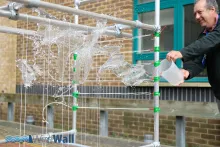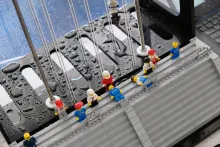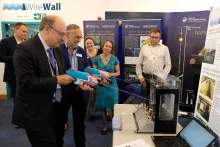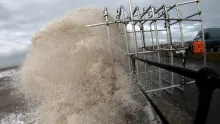This project aims to take a low-cost instrument that has previously been used to measure waves in the open ocean, and convert it into a system (‘WireWall’) that will measure coastal overtopping hazard. The system will employ a three-dimensional grid of capacitance wires that detect contact with saltwater. This signal will be used to measure the volume and speed of overtopping at vulnerable locations on the 900-m long sea wall at Crosby in the North West of England. This sea wall is reaching the end of its design life and detailed monitoring of the local conditions has begun to aid the design of a new wall.
When planning sea defences a lot of data are needed to understand the potential hazards that might occur in decades to come. Numerical tools (e.g., EurOtop) use this data to test suitable sea wall designs. The tools do this by estimating the ‘overtopping hazard’ for each design, in other words the volume of water that might come over the wall during storm conditions. Accuracy of the tools is assessed by checking outputs against measurements of overtopping volumes during storms. Field experiments have previously used large tanks placed behind the sea wall to catch the water that comes over. Such experiments are very costly and can be difficult to do, so only a few have been made. They also only provide a limited amount of data and none at all on the speed of the water that overtops: an important factor for public safety. This lack of measurements means there is large uncertainty in the numerical estimates of the hazards, so sea defences are overdesigned to have large safety margins and may therefore cost much more than they need to.







